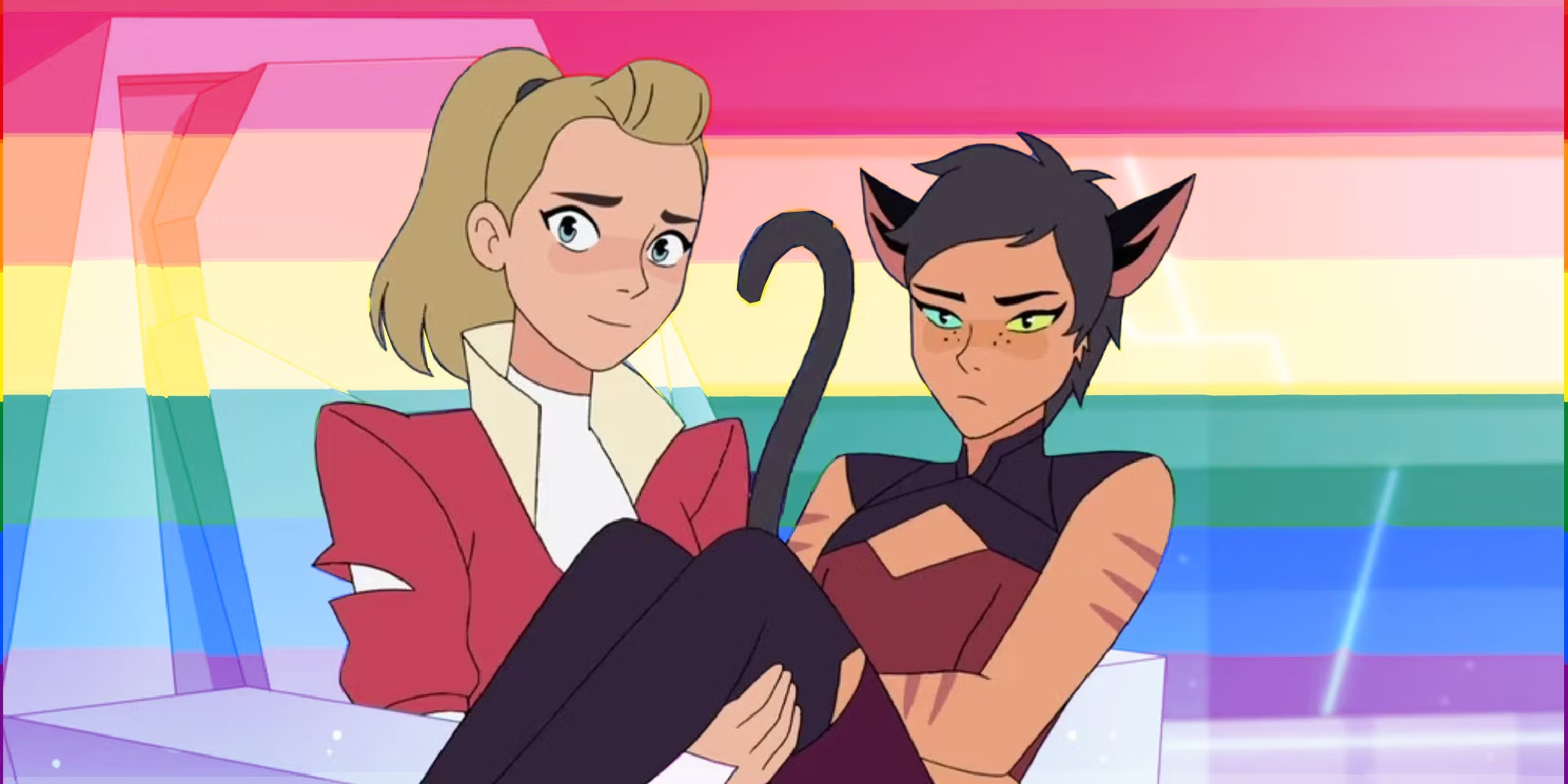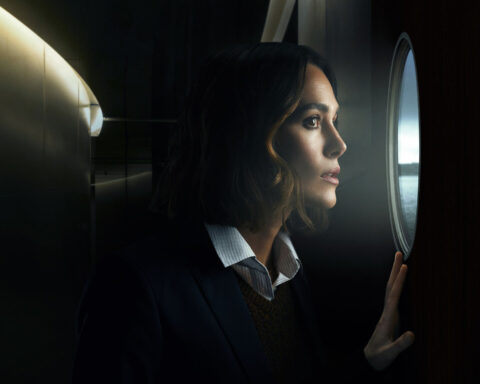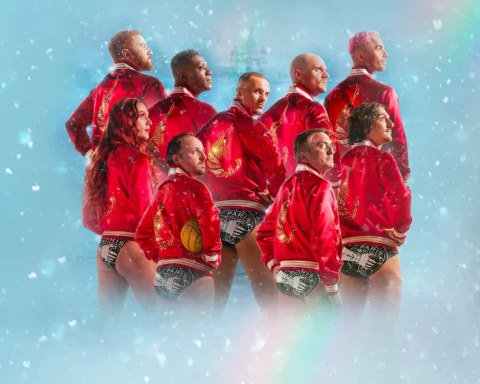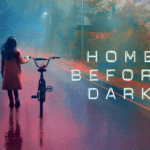‘She-Ra and the Princesses of Power’ emerged as a noteworthy reimagining of the 1985 classic series. Produced by DreamWorks Animation under the creative direction of Noelle Stevenson, this modern reboot debuted on Netflix in 2018. It reinvigorated the original’s narrative, aligning it with contemporary values and visual aesthetics.
The series traces the journey of Adora, a spirited young woman who discovers a magical sword that transforms her into the legendary warrior She-Ra. This transformation propels her into a central role in the battle against the evil Horde, a malevolent force that seeks to enslave and dominate the planet of Etheria. Adora’s newfound powers come with the responsibility to unite various princesses and other allies to resist the Horde’s tyranny, underscoring themes of unity, courage, and resilience.

Key characters populate this vibrant and dynamic universe, contributing to its richly woven narrative. Alongside Adora/She-Ra, the series features Glimmer, a determined princess with the power of teleportation, and Bow, a skilled archer and tech-whiz. Together, they form the core team fighting the oppressive forces led by the formidable Hordak and his ruthless lieutenant, Catra. Importantly, the relationship dynamics, especially between Adora and Catra, bring depth to the storyline, exploring complex themes of loyalty, betrayal, and redemption.
The show’s innovative approach extends beyond its storyline. ‘She-Ra and the Princesses of Power’ is heralded for its progressive representation of gender dynamics and its inclusive portrayal of LGBT characters. This modern adaptation melds traditional heroic tales with contemporary societal values, making it a beloved addition to the anime genre. Through its intricate characters, compelling plot, and dedication to diversity, ‘She-Ra’ has firmly established itself as both a nostalgic homage and a forward-thinking masterpiece.
She-Ra stands as a trailblazing example in the realm of animation, embracing a progressive stance on gender and sexuality. The series dismantles traditional gender norms, offering a refreshing take by integrating characters of diverse gender identities and sexual orientations. ‘She-Ra’ not only showcases inclusivity but normalizes LGBTQ+ relationships, reflecting a more accepting and varied world beyond the screen.

Gender Fluidity and Non-Binary Representation
One of the significant highlights of ‘She-Ra’ is the inclusion of non-binary characters. Double Trouble, a shape-shifting mercenary, provides a groundbreaking representation of non-binary identity in mainstream media. As a character who defies conventional gender binaries, Double Trouble enriches the narrative, showcasing that gender is not a rigid binary construct but a spectrum. This inclusion marks a milestone, paving the way for increased visibility and understanding of non-binary individuals within the anime community.
Diverse Family Dynamics
Another pivotal aspect is the portrayal of diverse family structures. Bow, one of the central characters, has two fathers, George and Lance. This positive depiction of same-sex parenting stands in stark contrast to the often absent or sidelined representation of LGBTQ+ families in other animated series. The show emphasizes love, care, and family support, uniquely integrating these themes without making them the sole focus, thus representing LGBTQ+ relationships as normal and integral aspects of society.

LGBTQ+ Representation in Relationships
‘She-Ra’ further normalizes LGBTQ+ relationships through characters like Adora (She-Ra) and Catra, whose evolving relationship adds depth to the story. These characters’ journey from foes to lovers is portrayed with the same respect and complexity afforded to any other relationship in the series. This normalization is instrumental in challenging existing prejudices and fostering a broader acceptance of diverse forms of love and partnership.
By breaking barriers through these inclusive narratives, ‘She-Ra’ not only entertains but educates its audience on the richness of the human experience, affirming that love and identity should be celebrated in all forms.
Empowerment Through Feminism
“She-Ra and the Princesses of Power” stands as a bastion of feminist storytelling in the anime genre. By centering its narrative around strong, independent female characters, the series has redefined the archetype of a hero. These heroines are not shaped or confined by the presence of male counterparts, but rather, they define their own paths, showcasing an array of strengths and vulnerabilities that resonate deeply with viewers. The central character, Adora, transforms into She-Ra, a living symbol of empowerment. Her journey from a naive soldier of the Horde to a powerful leader fighting for justice embodies the essence of self-discovery and resilience.
Leadership is a recurring theme that permeates “She-Ra.” The series depicts women in leadership roles with undeniable competence and charisma. Queen Angella, Glimmer, Mermista, and even the villains like Catra, each portray unique leadership styles, challenging traditional gender dynamics and societal expectations. This diverse portrayal conveys that leadership is not monolithic but can be shaped by empathy, strategic thinking, courage, and emotional intelligence.
Modern dialogues around body positivity find a vibrant voice in “She-Ra.” The characters come in diverse shapes, sizes, and ethnicities, promoting the idea that heroism isn’t bound to conventional physical ideals. Entrapta, with her petite frame and tech-savviness, Netossa’s athletic build, and Spinnerella’s plus-size representation all contribute towards desegregating the notion of strength from appearance. By doing so, the series encourages viewers to embrace their bodies and recognize their own unique strengths.
The series broadens the concept of strength beyond physical prowess. Emotional resilience, intellectual sharpness, and moral integrity are equally valorized. Characters like Bow and Scorpia illustrate that compassion and loyalty are also forms of strength. By honoring varied dimensions of empowerment, “She-Ra” delivers a compelling feminist narrative that speaks volumes to a broad audience.
Ultimately, “She-Ra and the Princesses of Power” transcends conventional storytelling, offering a rich tapestry of feminist ideals interwoven with action, humor, and heart. It successfully positions itself as a transformative work, illustrating the multifaceted nature of strength and leadership within the vast landscape of anime.
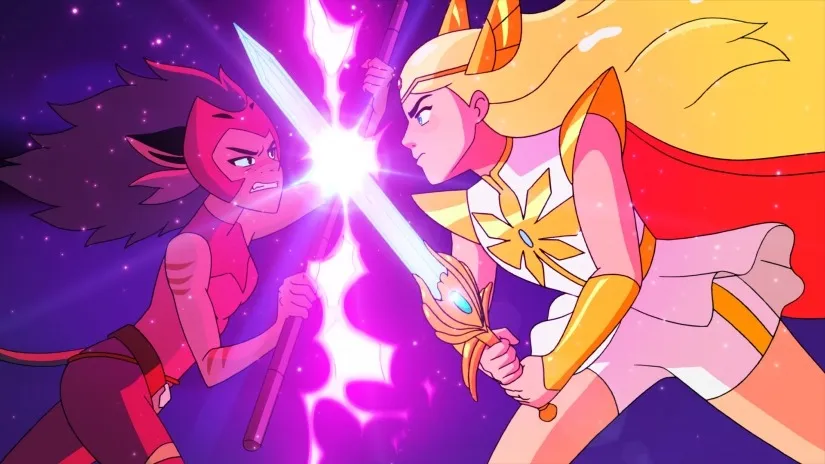



Innovative Storytelling and Character Development
‘She-Ra and the Princesses of Power’ has significantly advanced the narrative complexity commonly associated with children’s programming. Unlike many other shows in the anime world, ‘She-Ra’ conscientiously builds its storyline through layered storytelling and multi-dimensional character arcs. The series does not merely rely on episodic adventures but weaves an overarching narrative that matures and evolves as the seasons progress.
Characters like Catra and Glimmer exemplify this narrative sophistication. Catra’s evolution from a loyal friend to a nuanced antagonist is a testament to the show’s commitment to character depth. Her journey is marked by internal conflicts, struggles with identity, and a longing for validation, making her a compelling character who challenges the traditional dichotomy of good versus evil. This character arc allows viewers to empathize with her choices, despite their often antagonistic nature, thus adding a layer of moral complexity to the story.
Similarly, Glimmer’s growth from a headstrong and somewhat reckless princess into a responsible leader showcases the series’ dedication to character development. Her trajectory is fraught with personal loss, leadership challenges, and ethical dilemmas. This development not only enriches her character but also grounds the fantastical elements of the story in relatable human experiences. Characters like Glimmer and Catra become more than just figures in a narrative; they become representations of real-world complexities, resonating deeply with an audience that spans various age groups.
These nuanced portrayals contribute to creating a sophisticated and emotionally resonant narrative. The intricate web of relationships, including the exploration of same-sex dynamics, further adds to the progressive nature of ‘She-Ra’. This innovative storytelling, intertwined with LGBTQ+ themes and complex gender dynamics, elevates ‘She-Ra’ beyond mere entertainment. It becomes a pioneering work that challenges and expands the boundaries of children’s programming, making it a touchstone in modern anime storytelling.
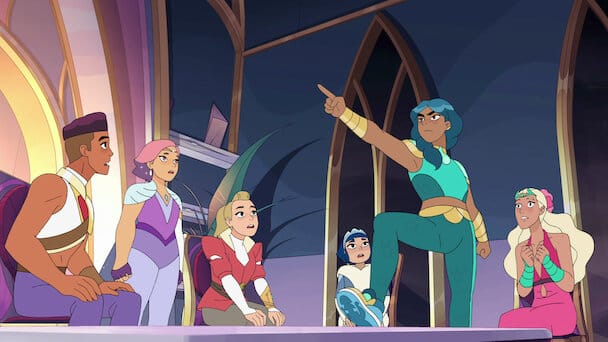
Inclusive Representation and Diversity
The reboot of “She-Ra and the Princesses of Power” sets a new precedent for inclusivity and diverse representation in the anime world. Beyond its nuanced portrayal of gender and sexuality, the series extends its commitment to diversity by incorporating characters from various ethnic backgrounds, body types, and life experiences. This dedication to inclusivity serves as a powerful reminder of the importance of representation in media, providing audiences with relatable characters and multifaceted storylines that resonate with a broad spectrum of viewers.
One of the standout elements of “She-Ra” lies in its eclectic cast. Characters such as Bow, who is depicted with a darker skin tone, and Spinnerella, who exemplifies body positivity with her fuller figure, showcase the series’ intention to break away from traditional molds and stereotypical depictions often seen in anime. By offering characters that reflect a more realistic and varied human experience, “She-Ra” becomes a beacon of inclusivity, allowing viewers from underrepresented groups to see themselves in the heroes they watch.
Moreover, the show’s narrative structure facilitates exploration of different backgrounds and personal journeys. Each character’s unique story contributes to a richer, more dimensional world that acknowledges the complexities of identity and individuality. For instance, the character Netossa provides nuanced insight into the experiences of women of color, enhancing the tapestry of narratives that interweave throughout the series.
The importance of such representation cannot be understated. In an era where media plays a pivotal role in shaping societal norms and perceptions, “She-Ra’s” dedication to diversity aids in normalizing the presence of varied identities. It underscores that heroes come in all forms and that each person’s story is worthy of being told. By making strides in inclusivity, “She-Ra and the Princesses of Power” not only enriches its narrative but also paves the way for future anime series to embrace and celebrate diversity in all its forms.

Themes of Friendship and Chosen Family
“She-Ra and the Princesses of Power” masterfully delves into the themes of friendship and chosen family, portraying them as indispensable sources of strength and resilience. Central to this animated series are the relationships between characters such as Adora, Glimmer, and Bow, whose bonds underscore the narrative’s emphasis on emotional support and unity.
Adora, upon discovering her identity as She-Ra, finds herself in a new world rich with allies, yet fraught with challenges. Her connection with Glimmer and Bow transcends mere camaraderie; they become her chosen family, representing the core of her support system. This dynamic trio aids each other, highlighting the importance of strong, trust-filled relationships amid adversity. Their interactions demonstrate that family need not be defined by blood but by mutual respect, understanding, and unwavering loyalty.
Glimmer’s journey, from princess to queen, is profoundly shaped by her relationships. As she grows into her role, the steadfast presence of her friends provides her with the courage and confidence to lead. Bow, the tech-savvy and compassionate warrior, acts as a linchpin in their trio, often serving as the voice of reason and the emotional anchor. His unwavering support is crucial in guiding both Adora and Glimmer through their respective struggles and triumphs.
Moreover, the inclusive narrative of “She-Ra” extends beyond its core group. Characters like Catra, Scorpia, and Entrapta, although initially antagonists, showcase the potential for redemption and acceptance through the power of friendship and understanding. Their arcs emphasize that even seemingly irredeemable characters can find solace and a sense of belonging within a chosen family.
This portrayal is particularly resonant within the LGBTQ+ community, where the concept of chosen family is often a necessary and affirming reality. “She-Ra” thus becomes a beacon for diverse audiences, reflecting the importance of forging meaningful relationships that transcend conventional boundaries. In celebrating the strength derived from friendship and chosen family, the series fosters a narrative that resonates with all who seek connection and solidarity.

Impact on the Anime and Animation Industry
‘She-Ra and the Princesses of Power’ has left an indelible mark on the anime and animation industry, showcasing how a series can combine progressive themes with engaging storytelling to captivate a diverse audience. One of the most significant impacts of ‘She-Ra’ has been its role in setting a new standard for inclusive representation. By centering around LGBTQ+ and gender-positive narratives, the series has broken barriers that have traditionally existed in animation, making it a trailblazer for other creators seeking to incorporate similarly diverse themes.
The success of ‘She-Ra’ has demonstrated that content embracing diversity in sexual orientation and gender identity can attract a broad viewership. This has encouraged other creators within the anime and western animation industries to prioritize inclusive storytelling, ensuring that more viewers see themselves reflected on screen. The inclusion of a lesbian relationship between main characters Adora and Catra, for example, has resonated deeply with the LGBTQ+ community and has shown that such relationships can be portrayed with depth and nuance.
Moreover, ‘She-Ra’ has challenged the industry’s norms by offering complex characters that defy traditional gender dynamics. By weaving gender fluidity into its narrative, the series fosters a richer understanding of gender identity among viewers of all ages. This approach not only enriches the storytelling but also serves as a powerful educational tool, promoting empathy and acceptance in a straightforward, relatable manner.
The ripple effect of ‘She-Ra’ extends beyond just thematic content. Its commercial success underscores that risk-taking with innovative, progressive narratives can lead to both critical acclaim and financial profitability. This success story has incentivized studios to greenlight projects that might have previously been considered too niche or daring. Consequently, the animation landscape is gradually becoming more varied and inclusive, paving the way for a new era of storytelling where diversity is celebrated as a standard rather than an exception.

Conclusion: She-Ra’s Legacy
‘She-Ra and the Princesses of Power’ has undeniably etched its place in the history of anime and animation as a groundbreaking series. With its bold narrative choices and inclusive representation, the show has remarkably pushed the boundaries of traditional anime storytelling. From its distinct portrayal of gender dynamics to its embrace of LGBTQ+ themes, ‘She-Ra’ not only entertains but enlightens and educates its audience.
The show’s approach to character development and interpersonal relationships is pioneering. By presenting a diverse spectrum of characters that challenge traditional gender norms and societal expectations, ‘She-Ra’ fosters a deeper understanding and acceptance of varied gender identities. The portrayal of lesbian relationships and other LGBTQ+ narratives has been both sensitive and impactful, setting new standards for inclusivity in anime.
Another aspect that sets ‘She-Ra’ apart is its narrative complexity and depth. The anime’s ability to intertwine action, emotional resonance, and social commentary creates a multifaceted experience for viewers. The show’s creators have skillfully used the medium to address pertinent issues, thereby broadening the scope of what anime can achieve.
‘She-Ra’ has not only garnered a dedicated fan base but has also inspired future storytellers to pursue more inclusive and innovative approaches. Its legacy is reflected in the growing demand for more diverse and representative content in animation. By paving the way for future anime to explore themes of gender, identity, and diversity, ‘She-Ra and the Princesses of Power’ stands as a testament to the evolving landscape of modern storytelling.
As we look forward, the influence of ‘She-Ra’ will undoubtedly continue to shape the narratives and characters that will resonate with audiences worldwide. The series exemplifies the transformative power of inclusive storytelling and reinforces the significance of representation in media, making it a true liberal and innovative masterpiece in the anime world.
